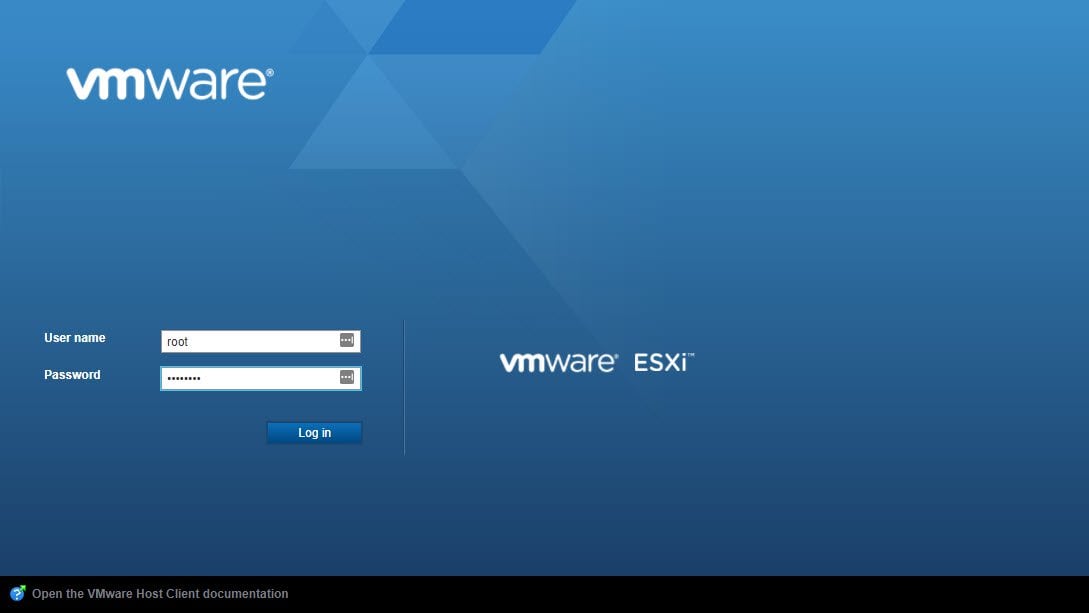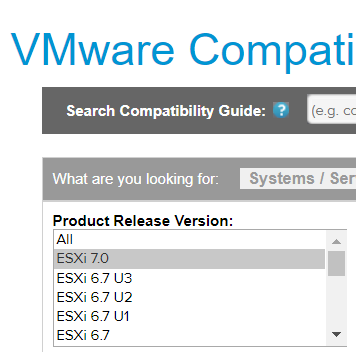
We will know when this is completed, since our VMware tools will say Current next to the version listed.
#Vmware esxi 6.7 hardware compatibility update#
Remember I just enabled Auto Update for VMware tools? Now I am simply going to reboot the VM.Īfter I reboot the VM (or restart the guest OS), I will see the Upgrade happening if I keep an eye on the virtual machine. You can also see that under Compatibility, ESXi 6.5 and later is listed, when I am running vSphere 6.7 U1. VCenter is nice enough to let me know I need to update VMware tools. Now, let’s take a look at my lonely VM that I have running. I just turned on Auto Update for that virtual machine. This is pretty cool, since you can let vSphere Update Manager take care of the upgrade during a regular reboot cycle instead of forcing another reboot.

Auto Update is a feature that updates VMware Tools on the next reboot of the virtual machine. Here we can select a subset of VMs, or particular ones we are interested in upgrading VMware Tools on. Upgrading VMware Tools With vSphere Update Manager 6.7 U1 We have already talked about Host Updates, so let’s look at VMware tools first. When we click Updates on our vSphere cluster, we have the option to configure Host Updates, VMware Tools, and VM Hardware updates (VM hardware compatibility). You can also upgrade them at the cluster level.

Updating VMware Tools and VM Hardware Compatibility on Multiple Virtual MachinesĪs I showed when I enabled VMware Tools and VM hardware compatibility upgrades, you can upgrade your virtual machines individually. It is important to ensure you have a process in place for dealing with these virtual machine snapshots, should you chose to take them and not delete them. The choice is up to you, but please take heed of this setting. If an issue arises, the VMs can be restored from backup, but this takes longer than working with a VMware snapshot. This is a good option as well, as long as we can ensure our VMs are functioning correctly in that time period.Īnother option is to turn off Take snapshot of VMs, and back up the VMs before we upgrade. On the other hand, we can say to only keep snapshots for a certain amount of time. If we say do not delete them, we must make sure we delete them ourselves. While this is a safe option, we also must worry about how long we leave snapshots open, and committing them when they are no longer needed. As you can see the default option is to Take snapshot of VMs and do not delete snapshots. This is where things can get very interesting. If we navigate to vSphere Update Manager, then click Settings, we see the following option when we click VMs under Remediation Settings. There is one major setting when it comes to updating Virtual Machines with vSphere Update Manager. I clicked Enable, and my view changed to this:įantastic! Before we do any upgrading, let us first take a look at options available for Virtual Machines in vSphere Update Manager. I discovered this by clicking the Update tab on a virtual machine seeing this message: I did not realize this and spent some time poking around the vSphere Update Manager interface. Enable VMware Tools and VM Hardware Compatibility in vSphere Update Managerīefore we go any further, VMware Tools and Virtual Hardware upgrades must be enabled.

Let’s take a closer look at how we can do that. You want to make sure the VMware Tools and VM hardware you are going to upgrade to are the latest and greatest, and the ESXi host must support the new versions before you can upgrade.Īfter that, it is a matter of performing your upgrades.


 0 kommentar(er)
0 kommentar(er)
